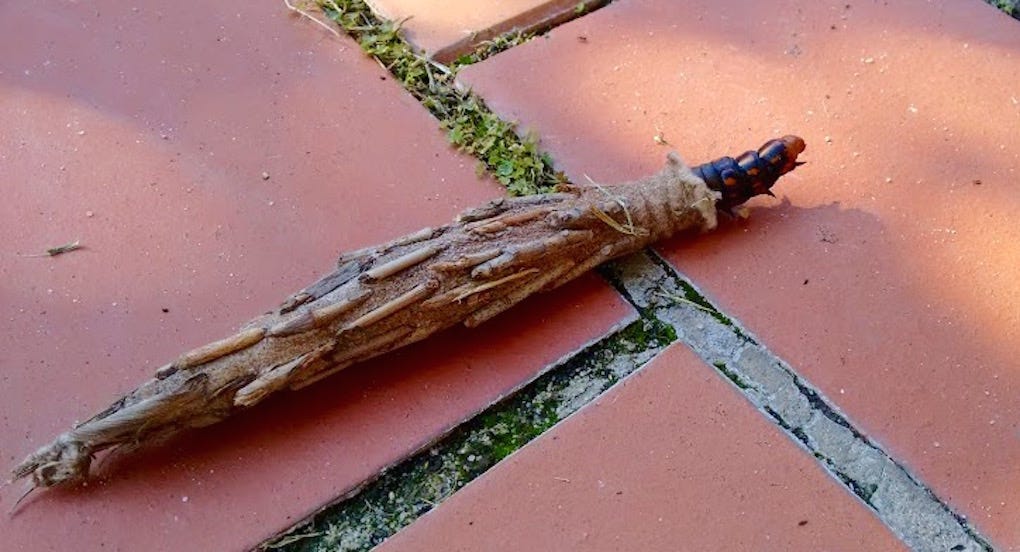
Member-only story
The Summer of the Saunders Case Moth
The Saunders Case Moth can best be described as what you get when a lizard and a caterpillar decide to evolve — together.
At the beginning of summer, in a backyard in Melbourne’s northern suburbs I watched, dumbfounded, as some sort of thick worm inched its way across a handrail. It’s not exactly unusual for worms or grubs or caterpillars to crawl around outside. Except this thing, wasn’t crawling. It was clawing.
At around five inches long, it was a shiny black with orange stripes and a rounded, nub of a head to match. Its underbelly was covered in a series of sharp, opposing nails and as it dragged itself across the wood, it left a faint zigzag pattern in something that looked like snail slime.
If you were to see solely its pointy claws and almost ridged scales, you would think it was some kind of lizard — the type that could only come out of Australia. But lizards don’t emerge from cocoons. Nor do they continue to carry them around.
As I photographed, videoed and googled said grub, it continued to make its way across the light green wood, the cocoon suspended from its rear swinging gently from side to side. There were times when I thought it would just fall off. Or in a bid for freedom shed its cocoon, sprout wings and fly away. But instead, as if perceiving some threat, it swivelled its orange head around and sized me up with its eyeless face.
The Saunders Case Moth (Metura elongatus) is a member of the Psychidae or bagworm family. They are common in Melbourne and Victoria’s coastal areas with a range extending from Tasmania to south-east Queensland. There are some 350 species of bagworm in Australia yet until this summer I had never seen one in my 23 years in Melbourne.
The first moth I noticed was a cocoon hanging from a terracotta pot plant. It was a series of sticks layered almost atop one another and held together by a wispy, beige thread forming an elongated spindle. The thread then tapered to a neat end where it was fixed to the pot.
Bagworms are expert carpenters who will spend a painstaking hour cutting through just one stick with their ‘mouthparts.’ And once the initial cocoon is built, the construction is far from over. As they pupate head down, case moth’s will continue adding to their cocoons…
